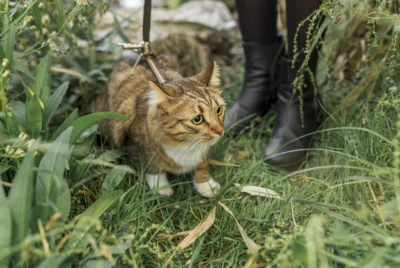Why Do Cats Pee on My Clothes?
Understanding Cat Peeing Problems
Why do cats pee on clothes? Some of the several reasons you see your cat urinating on your clothes could be to set territory or due to a urinary tract infection.
Other cats exhibit stress symptoms by not using the cat litter. Additionally, a female cat may also exhibit inappropriate urination behavior due to hormonal reasons.
It’s true finding your cat has peed on your clothes can be upsetting. But instead of getting mad, try to understand why. It’s rarely done on purpose, and figuring out the reason helps fix the problem.
This article will explain why cats sometimes pee outside their litter box and how to help them use it the right way.
The Importance of Finding the Cause
Ignoring cat pee problems can make things worse. Your furniture might get ruined, and the smell might linger. Plus, it can stress out both you and your cat. Therefore, figuring out why your cat pees in the wrong place is important to solving the problem.
Common Reasons Cats Pee Outside the Litter Box
Medical Causes
- Urinary Tract Infections (UTIs): These are like catching a cold, but in your pee parts. It can make your cat uncomfortable and pee outside the litter box. Signs of a UTI include peeing a lot, straining while peeing, and blood in the urine.
- Bladder Stones: These are like tiny rocks in your cat’s bladder. They can hurt when your cat pees, making them try to pee somewhere else. Watch out for blood in the urine, peeing little bits at a time, and difficulty peeing.
- Kidney Problems: When kidneys get old and tired, they don’t work as well. This can affect your cat’s pee habits and make them pee in places they shouldn’t. Signs include drinking a lot of water, losing weight, and not feeling well.
- Diabetes: If your cat has too much sugar in their body, they might drink and pee more than usual. This can be a problem if the litter box isn’t clean or close enough.
- Hyperthyroidism: This is like having their engine running too fast. It can make them thirsty and need to pee more, similar to the other condition.
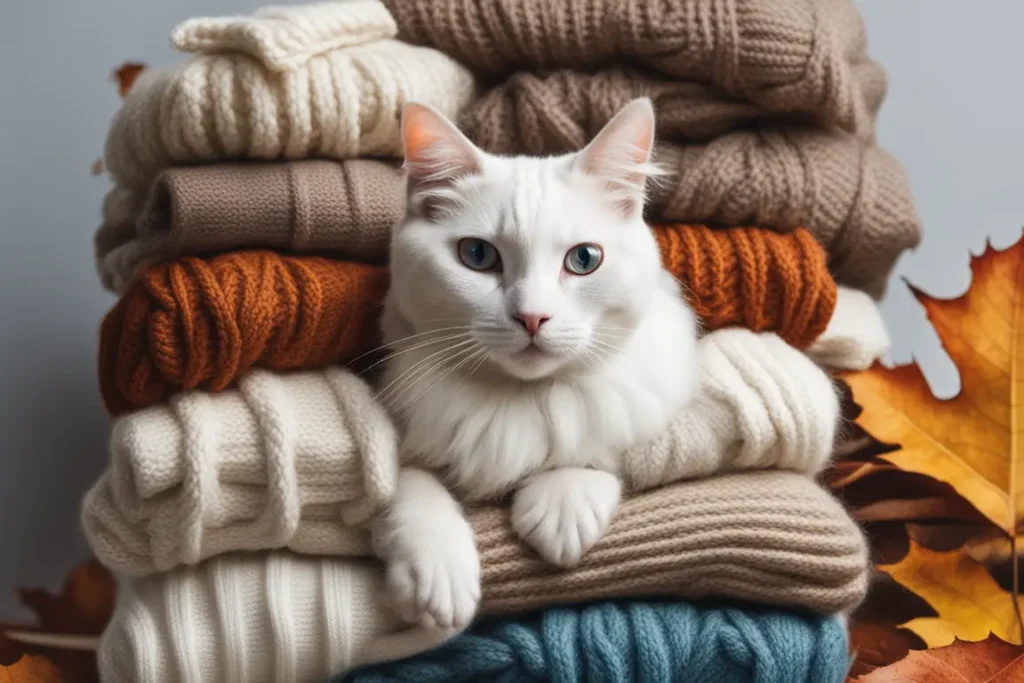
Behavioral Causes
- Litter Box Issues:
- Cleanliness: Cats are clean animals and prefer a clean litter box. A dirty or smelly box will deter them from using it, leading them to find other places to pee.
- Accessibility: Ensure the litter box is easily accessible and not located in a loud or busy area. Consider providing multiple litter boxes, especially in multi-cat households.
- Litter Type: Some cats may dislike the scent or texture of certain litters. Experiment with different types to find one your cat prefers.
- Location: Cats value privacy when using the litter box. Avoid placing it in a high-traffic area, near noisy appliances, or close to their food and water bowls.
- Number of Litter Boxes: A general rule of thumb is to provide one more litter box than the number of cats in your household.
- Territorial Marking: Cats sometimes mark their territory with urine, especially unneutered male cats. This behavior is more common in stressful situations or when they feel insecure, such as:
- New pet introductions: Introducing a new pet can be stressful for your cat, leading to territorial marking.
- Changes in routine: Even seemingly minor changes, like moving furniture or a new cleaning schedule, can disrupt your cat’s routine and trigger marking behavior.
- Multiple cat households: Competition for resources such as litter boxes and space can lead to territorial marking in some cats.
- Stress and Anxiety: Changes in routine, new pets, loud noises, or even moving furniture can stress cats, causing them to pee outside the litter box. Other signs of stress in cats include:
- Hiding: Excessive hiding can indicate your cat feels unsafe or insecure.
- Scratching furniture: Increased scratching can be a sign of stress or anxiety.
- Changes in appetite: Some stressed cats may eat less, while others may eat more.
- Attention-Seeking: While less common, some cats may resort to peeing on clothes to get your attention, especially if they feel neglected or ignored.
These medical and behavioral causes affect each other. For example, urinary tract infections cause discomfort to your feline friend. Resultantly, you will notice some changes in your cat’s behavior. You may start asking yourself why my cats start to pee on my clothes. This is all because of the discomfort brought about by having a urinary tract infection.
Also read: Cat Rolling 101: Why Does My Cat Roll Around on the Floor?
How to Stop Your Cat from Peeing on Clothes
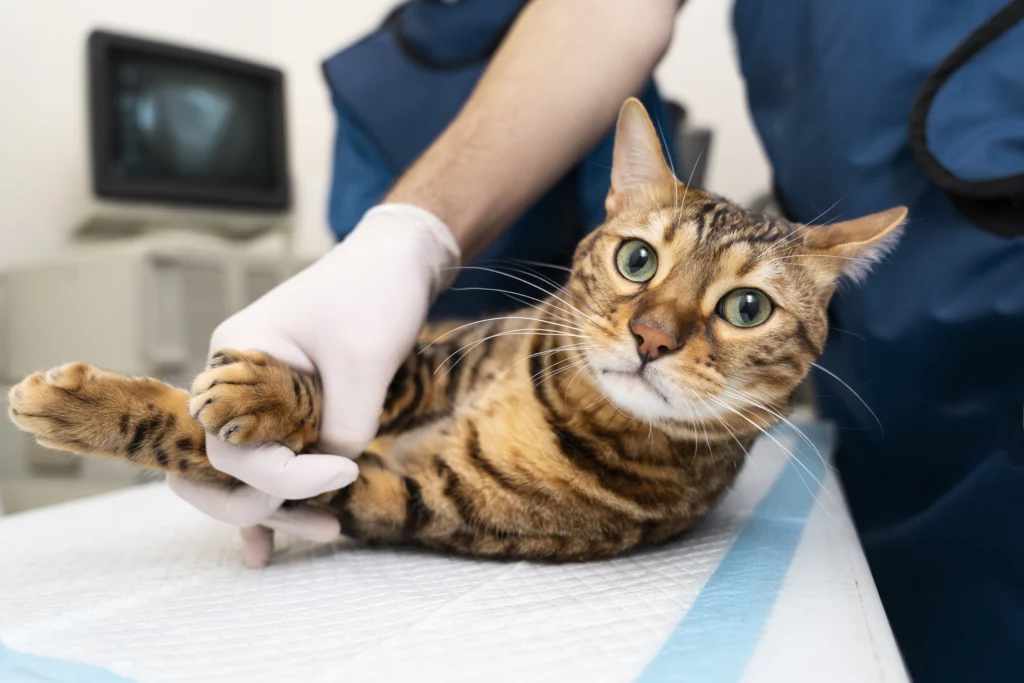
Go to the Vet First
Before assuming your cat is just being naughty, take them to the vet to rule out any medical problems as to why your cat urinates outside the box.
It is important for the cat owner to seek veterinary help because a urinary tract infection could be fatal to male cats within a few hours of contacting the bacteria. For female cats, it may not be as immediate, but you need to see the vet within 24 hours.
Clean Up the Mess Properly:
Cleaning up cat urine is important to remove the smell and prevent your cat from returning to the same spot. Never use harsh chemicals, as these can attract them back due to the strong scent.
Use the Right Cleaning Products:
Enzyme cleaners specially made for pet accidents are best at breaking down the odor and preventing stains. White vinegar diluted with water can also be used, but make sure to rinse thoroughly afterward.
Address the Underlying Cause
Once medical issues are ruled out, address the specific reason why your cat is peeing outside the box:
Keep it clean: Scoop the litter box every day and change the litter at least once a week. A clean box is like a clean bathroom; your cat will be more likely to use it.
Find the right litter: Try different types of litter until you find one your cat likes. Some cats prefer soft litter, while others prefer clumping litter.
More is better: Have one more litter box than the number of cats you have. This gives them options and reduces competition.
Pick the perfect spot: Place litter boxes in quiet, calm areas away from noisy appliances or busy walkways. Your cat needs privacy!
Stop the spraying: Neutering male cats greatly reduces spraying, which is often a way to mark territory.
Less stress, more purrs: If your cat is going through changes, like a new pet or furniture, create hiding spots for them to feel safe.
Playtime is important: If your cat seems bored or attention-seeking, schedule more playtime to bond and keep them entertained.
Prevention and Early Intervention
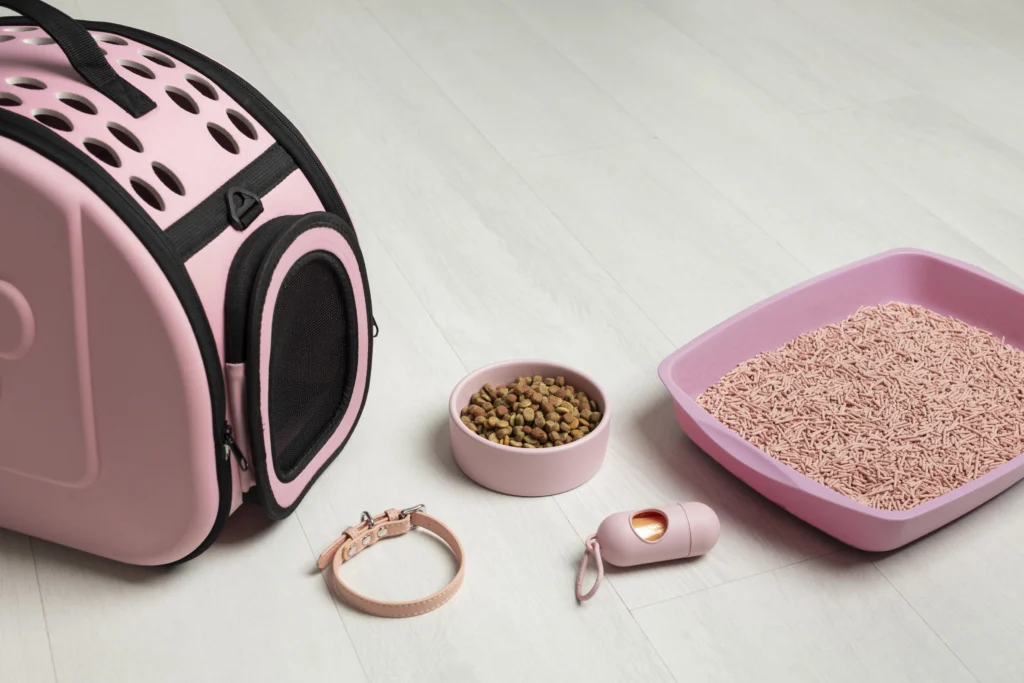
Regular Vet Checkups: Take your cat to the vet regularly for checkups, like going to the doctor for you. This helps catch any problems early, before they make your cat go potty in the wrong spot.
Maintain a Clean Litter Box: Keep your cat’s potty clean by scooping it every day and changing the litter at least once a week. A clean potty makes your cat more likely to use it.
Provide a Stimulating Environment: Give your cat scratching posts, climbing things, and hiding spots to play with and relax in. This keeps them happy and less likely to go potty where they shouldn’t.
Positive Reinforcement: When your cat uses the litter box, give them a treat or praise them to make them feel good. This helps them learn that using the litter box is the right thing to do.
Additional Tips:
Keep Dirty Laundry Out of Reach: Dirty clothes can be tempting for cats due to sweat and other bodily fluids. Wash dirty clothes promptly and keep them in closed hampers or laundry baskets placed in areas inaccessible to your cat.
Seek Professional Help: If you’re struggling to address the problem on your own, consider consulting a certified animal behaviorist for personalized guidance. They can help you assess the situation, develop a behavior modification plan, and provide ongoing support.
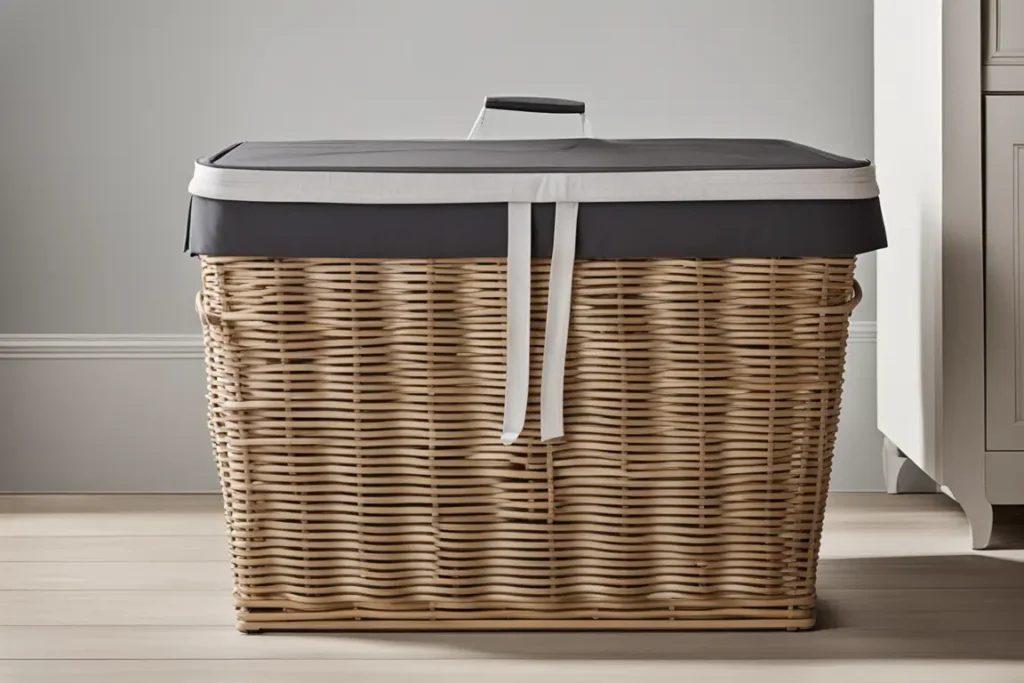
Remember:
No yelling or punishment: Yelling or punishing your cat for going potty in the wrong spot won’t help. It will just make them scared and upset you more. They are trying to tell you something is wrong, not being bad.
Be patient: Fixing the problem takes time. Don’t get discouraged if it doesn’t work right away.
Love your cat: Play with them, give them treats, and make them feel comfortable and safe. This will help them be happy and less likely to go potty in the wrong spot.
Understand your cat: Figure out why they are going potty in the wrong spot and then fix that problem. With love and understanding, you can help your cat use the litter box again.


